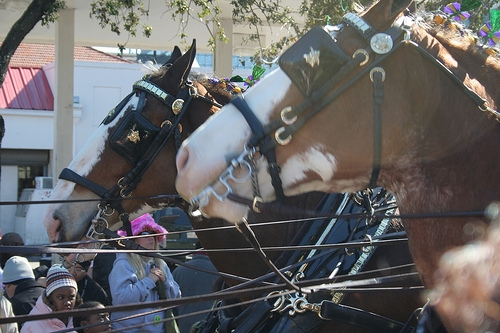Music
New Orleans Music
Sydney AU Mardi Gras shake-up for 2010
0Posted in: International Daily News
By GayNZ.cpm Daily News Staff
Sydney’s legendary Mardi Gras Parade and Party, traditionally held on the same night, are now planned on different weekends for 2010.
The Parade is scheduled for Saturday 27 February, then the Party will happen the following weekend – Saturday 6 March.
“In a move designed to make Mardi Gras an even more attractive event in the calendar of Sydneysiders and the world’s gay travelers, New Mardi Gras plans a more concentrated two-week festival, curated in tandem with its many arts partners,” explains Festival executive producer Danielle Harvey.
“A review of major arts festivals around the world showed they were typically two week festivals. By moving to two weeks we will be able to create a much more impactful experience for both local and international audiences.”
As part of the shorter festival, Sydney’s popular Fair Day will be held on Sunday 21 February, and the Harbour Party by the Opera House will be on the day after the Parade, on Sunday 28 February.
The Festival’s official 2010 theme will be ‘Mardi Gras’ History of the World’, aiming to incorporate LGBT people’s stories through the ages and provide a gay take on some of the great moments and figures of history.

Sydney AU Mardi Gras Festivities
R&B CARNIVAL MUSIC
0Carnival music adds considerable excitement to the festivities. All the major activities of the Carnival season: parades, balls, and parties make heavy use of music.
Probably the most popular songs of Carnival, revived annually on jukeboxes, the internet, and across the radio dial, are Rhythm and Blues Carnival Tunes performed by Professor Longhair, Al Johnson, and the Hawketts (also Hawkettes).
Four songs are heard most often: The Hawketts’ Mardi Gras Mambo, Al Johnson’s Carnival Time, Professor Longhair’s Go To the Mardi Gras, and Earl King’s Big Chief Part 1 & 2 (as performed by Longhair).
Mardi Gras Mambo was a local hit for the Hawketts in 1954. It was the first recording experience for the group, which included lead vocalist and organist Art Neville. The majority of the band was still in high school. They received little money from the recording, but were established as a favorite local performing group because of it. Oddly, there was never another Hawketts recording.
Over the last couple of decades, Mardi Gras compilations have multiplied prodigiously. The first and best compilation remains Mardi Gras Records’ Mardi Gras in New Orleans. The track list follows:
1. Go to the Mardi Gras, Professor Longhair
2. Handa Wanda, Bo Dollis and Wild Magnolia Mardi Gras Indian Band
3. Carnival Time, Al Johnson
4. Big Chief Part 2, Professor Longhair
5. Street Parade, Earl King
6. Second Line Part 1, Stop Inc.
7. Mardi Gras Mambo, the Hawketts
8. New Suit, the Wild Magnolias
9. Big Chief, Part 2, Professor Longhair
10. (Big Chief like plenty of) Fire Water, The Wild Magnolias
11. Handa Wanda Part 2, Bo Dollis and Wild Magnolia Mardi Gras Band
12. Second Line Part 2, Stop, Inc.
No article on popular Carnival music could be complete without mention of the official song of Rex, If Ever I Cease to Love. This song, a waltz, is the favorite of much of the ball-going set, a position it has held for a very long time, as the tune was first performed at the very first Rex parade in 1872.
The song was selected because Alexis Romanoff Alexandrovitch, the Grand Duke of Russia, had seen Lydia Thompson sing it in New York in a burlesque show, Blue Beard, and was smitten by both the woman and the tune. The Duke’s decision to visit New Orleans during Carnival prompted the hasty organization of a gala daytime procession, which became Rex. In honor of the Russian guest, If Ever I Cease to Love was played often. The song was an instant success, and it has been the preeminent ball tune ever since.
